Sicily Mount Etna
(Sicily, Italy)
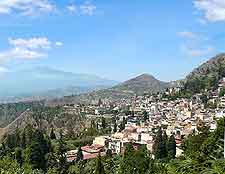
Mount Etna presides over the eastern side of Sicily and has become a tourist attraction in its own right, being the biggest volcano in the whole of Europe. Also ranking as one of the most active volcanoes in the world, Mount Etna lies alongside the busy cities of Catania and Messina.
Known for its frequent minor eruptions, which occur both at its four main craters and also from its fissures scattered along the slopes, Mount Etna is most famous for its devastating eruptions in 1669, which lasted a staggering 122 days and saw a huge lava river flow down its southerly slope and into Catania below, with almost 12,000 people dying during this natural tragedy.
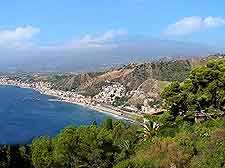
General Information
Catania is now very much back in action, being designed as an elegant modern city, with spacious public squares and wide boulevards. However, its character these days is quite different, since many of the buildings have been constructed using lava rock. Rooftops in Catania are also often liberally dusted with soot from Mount Etna, giving them a distinctive character.
Since 1987, Mount Etna has been considered to be a part of the Parco dell'Etna national park and is surrounded by lava deserts, beautiful Alpine forests, vineyards and orchards.
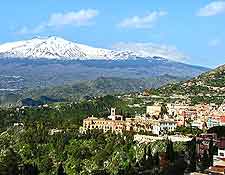
Many tourists visiting Sicily choose to pay a visit to this epic volcano, and treks are best done from the village of Piano Provenzana on its northern side, which serves as a popular ski resort in winter.
Rifugio Sapienza, based on the southern side of Mount Etna, also provides a popular approach, being home to the Etna Sud Tourist Office.
Those wishing to view Mount Etna at its most dramatic may like to consider taking a cable car ride, which transports you some 2,500 metres / 8,200 feet and stops near the authorised crater zone.
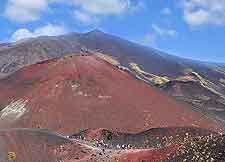
To reach the bottom, you can either walk down the trail (up to four hours), catch a guided truck tour or return to the cable car.
Another popular alternative is to take a train ride on the Ferrovia Circumetnea, a private railway encircling the base of the volcano and boasting excellent views along the way, passing towns such as Adrano, Bronte and also Randazzo.
The history of Sicily's much-visited and revered volcano is always of great interest to visitors, many of which are surprised to hear of its more recent activity.
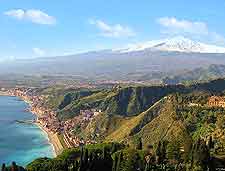
In 2001, Mount Etna began to erupt once more, spewing ash some 700 metres / 2,300 feet into the sky and covering Catania's airport.
The following year, a vast area of pine forest was destroyed by a lava flow, together with the entire resort of Piano Provenzano. Visitors are able to see the damage caused by these particular eruptions at the Valle del Bove, with official guided tours being provided by Gruppo Guide Apline Etna Sud at Nicolosi.
 Mount Etna presides over the eastern side of Sicily and has become a tourist attraction in its own right, being the biggest volcano in the whole of Europe. Also ranking as one of the most active volcanoes in the world, Mount Etna lies alongside the busy cities of Catania and Messina.
Mount Etna presides over the eastern side of Sicily and has become a tourist attraction in its own right, being the biggest volcano in the whole of Europe. Also ranking as one of the most active volcanoes in the world, Mount Etna lies alongside the busy cities of Catania and Messina.
 Many tourists visiting Sicily choose to pay a visit to this epic volcano, and treks are best done from the village of Piano Provenzana on its northern side, which serves as a popular ski resort in winter.
Many tourists visiting Sicily choose to pay a visit to this epic volcano, and treks are best done from the village of Piano Provenzana on its northern side, which serves as a popular ski resort in winter. To reach the bottom, you can either walk down the trail (up to four hours), catch a guided truck tour or return to the cable car.
To reach the bottom, you can either walk down the trail (up to four hours), catch a guided truck tour or return to the cable car. In 2001, Mount Etna began to erupt once more, spewing ash some 700 metres / 2,300 feet into the sky and covering Catania's airport.
In 2001, Mount Etna began to erupt once more, spewing ash some 700 metres / 2,300 feet into the sky and covering Catania's airport.